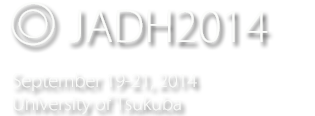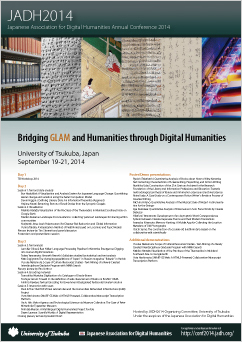Poster session 5
Quantitative Analysis of Dissonance in Solo Piano Works by Claude Debussy
- Aya Kanzawa (Tokyo Institute of Technology)
- Akihiro Kawase (National Institute for Japanese Language and Linguistics)
- Hajime Murai (Tokyo Institute of Technology)
- Takehiro Inohara (Tokyo Institute of Technology)
The goal of this study is to highlight how dissonance came to be used in modern Classical music, which was typically used less often before the Romantic School. The basic research that helped achieve this goal included a quantitative analysis of consonance and dissonance to highlight history of harmony in solo piano works composed by Claude Debussy.
Today, it is generally agreed that dissonance came to be used frequently in Classical music from the latter half of the nineteenth century. Around this time, the collapse of tonal music, which lasted for about 300 years from the Baroque School to the Romantic School, gave way for modern music. Presently, it is generally agreed that Debussy introduced a new era. Debussy was not caught in the existing concept that is functional harmony and formed impressionist music by using a unique harmony including unresolved dissonance. Impressionist music is characterized by heavy use of dissonance in music. Regarding history of harmony, including dissonance, Classical music has been analyzed as a case study using the humanities method. However, it lacks objectivity and empirical analysis, since large-scale music groups have not been targeted.
In order to highlight how dissonance came to be used in modern Classical music, given that it was used less frequently in music before the Romantic School, pieces composed by Debussy in which history of harmony were apparent were analyzed.
In this paper, 66 of Debussy's solo piano works were targeted. Solo piano works were particularly useful since they included only one instrument, which minimized noise, and they provided limited variables. Musical scores were analyzed rather than recorded sounds, allowing for comparison among composers from various times, as many musical scores written during that time used unified rules. Musical scores of the original text version, which were published by Durand, France, were used. Mr. Roy Howat, an internationally renowned pianist and Debussy scholar, supervised this musical score.
Dissonance has multiple definitions; however a quantitative approach will allow for a more comprehensive analysis.
The specific steps of analysis are as follows:
- Build a music corpus by collecting Debussy's solo piano pieces as data.
- Extract any sounds that can be heard simultaneously from MusicXML.
- Determine each interval by noting the combination of the two sounds being heard simultaneously.
- Classify into consonance or dissonance, based on the definition.
- Extract statistics regarding the frequency of use of dissonance, its density in music, and any repeated patterns.
- Keywords
- classical music, piano, dissonance, Claude Debussy, quantitative analysis

